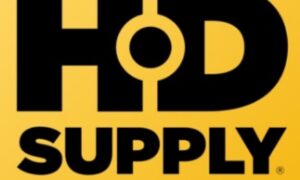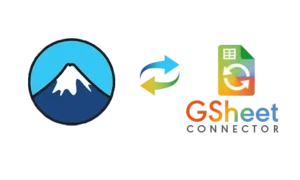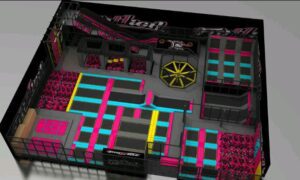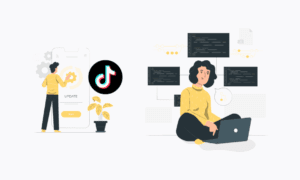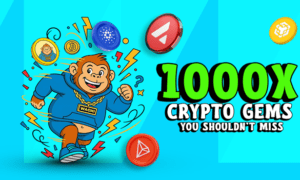Starting Your Blogging Journey
Have you ever thought about starting a blog? Whether you’re passionate about a particular topic or looking to share your expertise with the world, blogging can be an excellent way to express yourself and potentially earn money. In this comprehensive guide, we’ll walk you through the process of creating a blog and exploring various monetization strategies. We’ll even touch on some essential elements, like using an about us page generator to streamline your blog setup.
Choosing Your Niche
Before you dive into the technical aspects of setting up a blog, it’s crucial to decide on your niche. What topics are you passionate about? What expertise can you offer that others might find valuable? Consider the following when selecting your niche:
- Your interests and hobbies
- Your professional experience
- Current trends and market demand
- Potential for monetization
Remember, the key to a successful blog is consistency and authenticity. Choose a niche that you can write about regularly without losing interest.
Selecting a Blogging Platform
Once you’ve decided on your niche, it’s time to choose a blogging platform. There are numerous options available, each with its own set of features and learning curves. Some popular choices include:
- WordPress
- Blogger
- Wix
- Squarespace
- Medium
For beginners, WordPress is often recommended due to its flexibility and extensive plugin ecosystem. However, platforms like Wix or Squarespace might be more suitable if you prefer a simpler, drag-and-drop interface.
Setting Up Your Blog
Domain Name and Hosting
To establish a professional online presence, you’ll need a domain name and hosting service. Your domain name is your blog’s web address, while hosting is where your blog’s files and content are stored.
When choosing a domain name:
- Keep it short and memorable
- Make it relevant to your niche
- Avoid hyphens and numbers if possible
- Consider using keywords related to your content
For hosting, look for providers that offer:
- Reliable uptime
- Good customer support
- Scalability options
- Affordable pricing plans
Designing Your Blog
The visual appeal of your blog plays a significant role in attracting and retaining readers. While you don’t need to be a professional designer, consider these aspects:
- Choose a clean, responsive theme
- Use a color scheme that complements your niche
- Ensure easy navigation
- Optimize for mobile devices
Many blogging platforms offer pre-designed templates that you can customize to fit your needs.
Creating Essential Pages
Every blog should have a few key pages to provide information to your readers and enhance your credibility. These typically include:
- Home page
- About page
- Contact page
- Privacy policy
- Terms of service
Creating an “About” page can be challenging, but it’s crucial for connecting with your audience. This is where an about us page generator can be incredibly helpful. These tools can help you craft a professional and engaging about page that showcases your personality and expertise.
Content Creation and Management
Developing a Content Strategy
A well-planned content strategy is essential for maintaining a successful blog. Consider the following when developing your strategy:
- Define your target audience
- Create a content calendar
- Plan a mix of content types (e.g., how-to guides, listicles, opinion pieces)
- Research keywords relevant to your niche
- Set realistic publishing goals
Writing Engaging Blog Posts
The heart of your blog is its content. Here are some tips for writing engaging blog posts:
- Start with a compelling headline
- Use subheadings to break up text
- Include relevant images or videos
- Write in a conversational tone
- Provide value to your readers
- End with a call-to-action
Remember to proofread and edit your posts before publishing. Poor grammar and spelling can undermine your credibility.
Consistency and Frequency
Consistency is key in blogging. Decide on a posting schedule that you can maintain, whether it’s daily, weekly, or monthly. Regular updates keep your audience engaged and can help improve your search engine rankings.
Growing Your Audience
Search Engine Optimization (SEO)
SEO is crucial for driving organic traffic to your blog. Some basic SEO practices include:
- Using relevant keywords in your content
- Optimizing meta titles and descriptions
- Creating high-quality, original content
- Building backlinks from reputable sites
- Improving your site’s loading speed
Social Media Marketing
Leverage social media platforms to promote your blog and engage with your audience. Choose platforms that align with your niche and target audience. Share your blog posts, interact with followers, and participate in relevant online communities.
Email Marketing
Building an email list allows you to connect directly with your readers. Offer a newsletter signup on your blog and consider creating lead magnets (like ebooks or exclusive content) to encourage subscriptions.
Monetizing Your Blog
Once you’ve established your blog and built an audience, it’s time to explore monetization strategies. Here are some popular methods:
Affiliate Marketing
Affiliate marketing involves promoting products or services and earning a commission on resulting sales. To get started:
- Join affiliate programs relevant to your niche
- Incorporate affiliate links naturally in your content
- Disclose your affiliate relationships to maintain transparency
Display Advertising
Display ads can provide a steady stream of passive income. You can use ad networks like Google AdSense or work directly with advertisers. However, be mindful of ad placement to avoid negatively impacting user experience.
Sponsored Content
As your blog grows, you may have opportunities to create sponsored content for brands. This could include product reviews, sponsored posts, or brand partnerships. Always disclose sponsored content to maintain trust with your audience.
Digital Products
Creating and selling your own digital products can be a lucrative monetization strategy. Consider offerings such as:
- E-books
- Online courses
- Printables
- Digital templates
Coaching or Consulting Services
If you’ve established yourself as an expert in your niche, you might offer coaching or consulting services to your audience. This could include one-on-one sessions, group coaching, or workshops.
Maintaining and Scaling Your Blog
Analyzing Performance
Regularly review your blog’s performance using tools like Google Analytics. Pay attention to metrics such as:
- Page views
- Time on site
- Bounce rate
- Traffic sources
- Conversion rates
Use these insights to refine your content strategy and improve user experience.
Continuous Learning and Improvement
The blogging landscape is constantly evolving. Stay updated with industry trends, new monetization strategies, and technological advancements. Attend webinars, read industry blogs, and network with other bloggers to continue growing your skills.
Outsourcing and Delegation
As your blog grows, you might find it challenging to manage everything on your own. Consider outsourcing tasks like:
- Content writing
- Graphic design
- Social media management
- Technical maintenance
This allows you to focus on strategic planning and core content creation.
Conclusion
Creating and monetizing a blog requires dedication, patience, and strategic planning. Start by choosing your niche, setting up your blog, and consistently creating valuable content. As you build your audience, explore various monetization strategies to find what works best for your blog and audience.
Remember, success doesn’t happen overnight. Stay committed to your goals, be open to learning, and don’t be afraid to experiment with different approaches. With persistence and the right strategies, you can turn your blog into a successful online business.
Whether you’re using an about us page generator to craft the perfect introduction or diving deep into affiliate marketing, each step you take brings you closer to your blogging goals. So why wait? Start your blogging journey today and unlock the potential of your own online platform!








